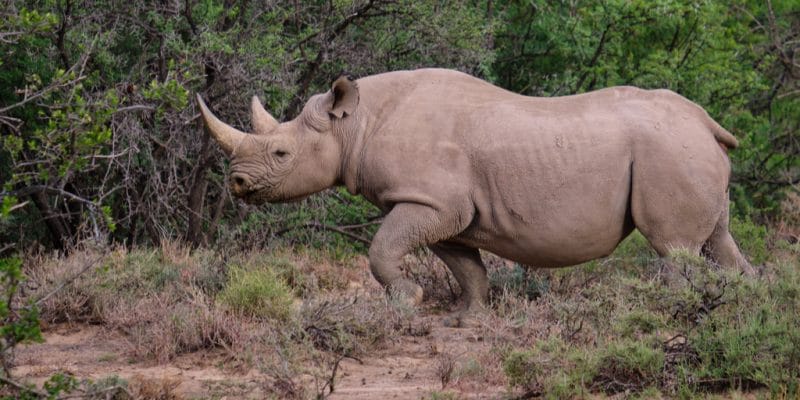The Serengeti’s Biodiversity: Safeguarding Rare and Endangered Species

The Serengeti’s Biodiversity: Safeguarding Rare and Endangered Species
The Serengeti biodiversity represents one of the most diverse and remarkable ecosystems on Earth. Spanning over 14,750 square kilometers, the Serengeti National Park in Tanzania is home to a vast array of species, many of which are rare or endangered. This iconic landscape is a UNESCO World Heritage Site and serves as a global symbol of wildlife conservation and natural beauty.
What is Serengeti Biodiversity?
Biodiversity in the Serengeti refers to the variety of life forms that inhabit the region, including mammals, birds, reptiles, insects, and plants. The Serengeti ecosystem supports a complex web of interdependent species, making it one of the most studied and celebrated ecosystems in the world.
Key Aspects of Serengeti Biodiversity
- Rich Mammalian Fauna: Over 70 species of large mammals, including predators, herbivores, and omnivores.
- Avian Diversity: More than 500 bird species, ranging from raptors to waterfowl.
- Flora: Grasslands, acacia woodlands, and riverine forests that support a wide range of organisms.
- Endangered Species: Home to species like black rhinos, African wild dogs, and certain vulture species.
Rare and Endangered Species in the Serengeti
Black Rhinos
- Once on the brink of extinction due to poaching, black rhinos are gradually being reintroduced into the Serengeti through conservation programs.
- Found in areas like the Moru Kopjes, they represent the park’s commitment to safeguarding critically endangered species.
African Wild Dogs
- These highly social predators were nearly wiped out in the Serengeti due to disease and human conflict.
- Conservation efforts have seen a slow but promising recovery of their population.
Vultures
- Vultures play a crucial role in the ecosystem as scavengers but face threats from poisoning and habitat loss.
- Several species, including the Rüppell’s vulture and white-backed vulture, are now endangered.
Cheetahs
- With their reliance on open plains for hunting, cheetahs are particularly vulnerable to habitat loss.
- The Serengeti remains one of their last strongholds.
Other Notable Species
- Lesser-known endangered species like the pangolin and the serval cat also thrive within the Serengeti.
The Role of the Serengeti Ecosystem in Biodiversity
The Serengeti ecosystem plays a pivotal role in maintaining biodiversity through its diverse habitats:
- Grasslands: Support large herbivores like zebras and wildebeests, forming the base of the food chain.
- Kopjes: Provide refuge for predators like lions and leopards and host unique plant species.
- Water Systems: Rivers and wetlands sustain fish, amphibians, and aquatic birds.
- Woodlands: Shelter for elephants, giraffes, and diverse birdlife.
Threats to Serengeti Biodiversity
Despite its protected status, Serengeti biodiversity faces numerous challenges:
- Poaching: Targeting high-value species like rhinos and elephants.
- Habitat Loss: Expansion of human settlements and agriculture around the park.
- Climate Change: Altering rainfall patterns and threatening species that rely on specific habitats.
- Human-Wildlife Conflict: Encroachment by humans leading to conflicts with predators and herbivores.
Conservation Efforts to Protect Serengeti Biodiversity
Anti-Poaching Measures
- Regular patrols and advanced technology, such as drones and GPS tracking, are employed to prevent poaching.
Community Engagement
- Programs like the Serengeti Ecosystem Development and Conservation Project involve local communities in conservation, offering sustainable livelihoods to reduce dependency on park resources.
Habitat Restoration
- Efforts to restore degraded habitats, such as reforesting riverine areas, help maintain ecological balance.
Wildlife Corridors
- Establishing migration corridors ensures safe passage for animals, especially during the Great Migration.
Research and Monitoring
- The Serengeti Research Institute studies species behavior, population dynamics, and ecosystem changes to inform conservation strategies.
The Great Migration: A Pillar of Serengeti Biodiversity
The Serengeti hosts the world-famous Great Migration, where over 1.5 million wildebeests, 200,000 zebras, and other herbivores traverse the ecosystem annually. This natural phenomenon:
- Supports predator populations by providing abundant prey.
- Facilitates nutrient cycling as grazers move across different areas.
- Highlights the interconnectedness of species within the Serengeti biodiversity.
How Can Visitors Support Serengeti Biodiversity?
Eco-Tourism
Choosing eco-friendly tours and lodges contributes to conservation funding.
Respecting Park Rules
Adhering to guidelines, such as staying on designated paths and avoiding littering, helps minimize human impact.
Advocacy and Awareness
Visitors can support organizations working to protect Serengeti biodiversity by donating or spreading awareness about the park’s importance.
Conclusion
The Serengeti biodiversity is a treasure trove of life that embodies the delicate balance of nature. From the vast migrations of wildebeests to the quiet persistence of endangered species, every element of this ecosystem plays a critical role in maintaining its beauty and function.
By safeguarding the Serengeti’s rare and endangered species, we not only protect a unique natural heritage but also preserve a vital part of our planet’s ecological legacy for generations to come.

One Comment